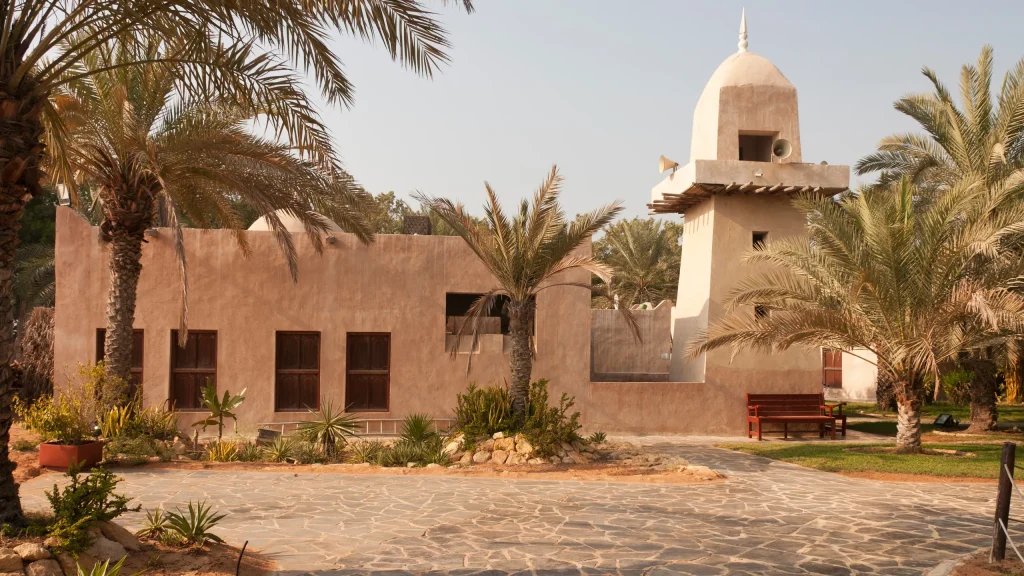What makes a mosque more than a place of worship? When it becomes a symbol of unity and artistry. Sheikh Zayed Grand Mosque is one of Abu Dhabi’s most iconic landmarks and a cultural anchor for both residents and visitors. It welcomes people of all backgrounds, inviting them into a world of intricate marble, floral mosaics, and serene courtyards. The design draws inspiration from Mughal, Moorish, and Persian architecture. Visits are free, but dress codes are enforced respectfully, reflecting the reverence of the space.
Qasr Al Watan introduces visitors to UAE’s political heritage
Abu Dhabi isn’t just about tradition—it’s about how heritage shapes governance today. Qasr Al Watan, or the Palace of the Nation, opens the door to the UAE’s political legacy. This working presidential palace combines function with public access. Inside, you’ll find ceremonial halls, a vast library, and exhibits detailing the region’s evolution. It’s not a museum in the typical sense. It’s a space where official state business meets transparent storytelling. This dual role gives Qasr Al Watan a unique cultural weight.
Louvre Abu Dhabi connects civilizations through art
In a city filled with modernity, Louvre Abu Dhabi offers a pause—an invitation to reflect. The museum’s design, floating dome, and serene waterfront location set the stage. Inside, artwork spans eras and continents, curating a dialogue between civilizations. From Mesopotamian relics to Renaissance paintings and Islamic manuscripts, the collection respects global narratives. The curation avoids nationalism, instead emphasizing shared human experiences. Workshops and temporary exhibitions add fresh layers for repeat visitors.
Traditional souks offer everyday cultural engagement
Sometimes culture isn’t found in galleries—it’s woven into daily life. Abu Dhabi’s souks are living testaments to tradition. Al Mina Fish Market, Carpet Souk, and Al Ain Souk reveal rhythms that haven’t changed much in decades. Vendors shout prices, customers inspect goods, and conversations drift in various Arabic dialects. These spaces provide more than shopping. They invite immersion into how people trade, speak, and navigate personal interactions. Visiting a souk requires no ticket—only curiosity and time.
Cultural Foundation bridges past and contemporary voices
If you’re wondering where Abu Dhabi’s local creativity flourishes, the answer is the Cultural Foundation. Located near Qasr Al Hosn, this venue hosts art exhibitions, performance events, and literary activities. Its architecture blends retro modernist lines with Arabian motifs. The space actively supports Emirati artists, offering a platform for contemporary expression rooted in heritage. Families often gather here for storytelling sessions or workshops. It’s a quieter cultural site, but one rich in meaning and growth.
Al Ain gives a glimpse into desert oasis life
Abu Dhabi’s cultural richness isn’t confined to the capital’s urban grid. Drive out to Al Ain, and the landscape shifts. Known as the Garden City, Al Ain presents a different tempo. Palm-filled oases, mud-brick forts, and ancient irrigation systems called falaj shape everyday scenes. The Al Ain National Museum and Al Jahili Fort explore these themes in detail. Unlike curated urban experiences, Al Ain offers lived heritage. It’s where tradition feels less staged and more alive.

Falconry shows reveal the depth of Bedouin identity
Falcons aren’t just birds in Abu Dhabi—they’re emblems of endurance, loyalty, and precision. Falconry remains a cherished tradition, passed down through generations. At dedicated centers or desert shows, visitors can witness the bond between falconers and their birds. Training methods, feeding rituals, and hunting demonstrations give insight into a legacy shaped by survival in harsh environments. This connection to nature reflects Bedouin adaptability and respect for life. It’s not just performance—it’s cultural transmission.
Art fairs and cultural festivals bring heritage to life
Abu Dhabi’s calendar is filled with events that make culture dynamic and accessible. The Abu Dhabi International Book Fair, Abu Dhabi Art, and Mother of the Nation Festival are just a few examples. These festivals invite international voices but remain deeply rooted in Emirati values. You’ll find calligraphy booths beside tech installations, or poetry recitations paired with digital art. This balance of preservation and innovation shapes Abu Dhabi’s cultural rhythm today. Participation is encouraged, not just observation.
Heritage Village offers reconstructed cultural landscapes
Heritage Village might be staged, but it still holds value. Located along the Corniche, this site reconstructs a traditional Emirati village. Palm houses, pottery workshops, and weaving stations demonstrate how life once looked before the oil era. For many visitors, this is an entry point into local history. The aim is not to romanticize the past, but to make it visible. Guides and artisans onsite are usually open to questions, which makes the experience more interactive and genuine.
Storytelling and poetry nights sustain oral traditions
Before urban skylines and concrete towers, stories were how communities defined themselves. Nabati poetry, folktales, and oral histories remain central to Emirati identity. Cultural centers occasionally host storytelling nights where elders and young poets share narratives passed through generations. These events aren’t just performances—they are acts of preservation. The atmosphere is often informal, encouraging audience engagement. Listening to these voices offers a unique access point to values, humor, and historical memory.
This guide was prepared by the editor of www.few.ae using verified insights and local experience.


 then "Add to Home Screen"
then "Add to Home Screen"